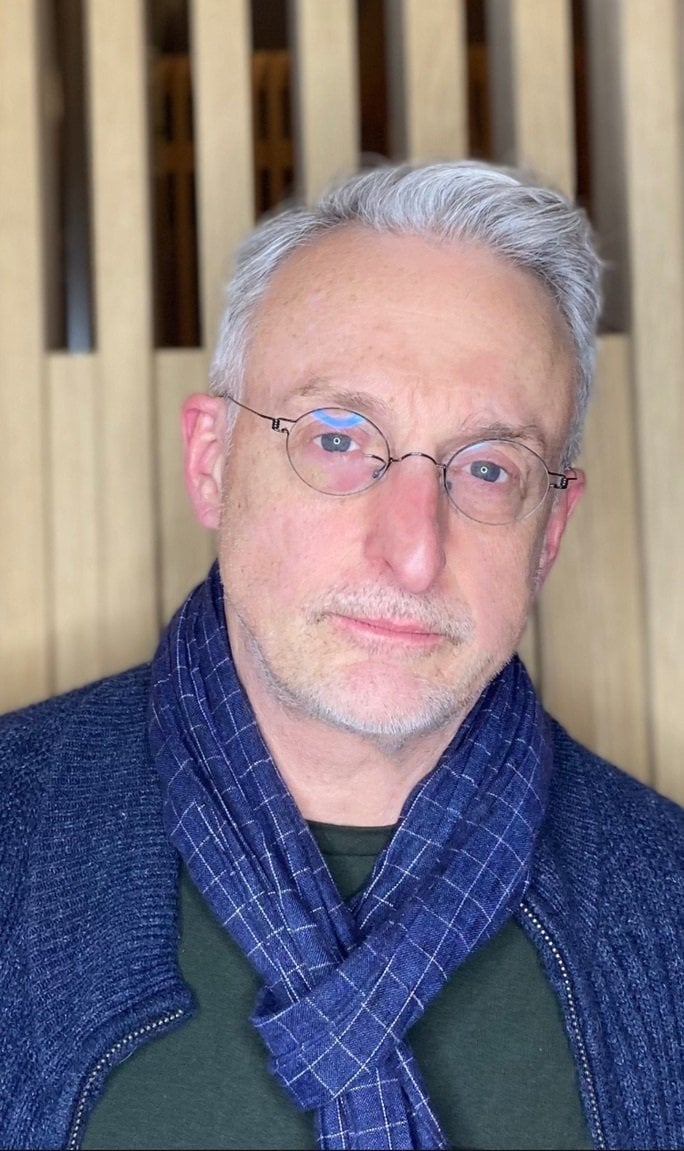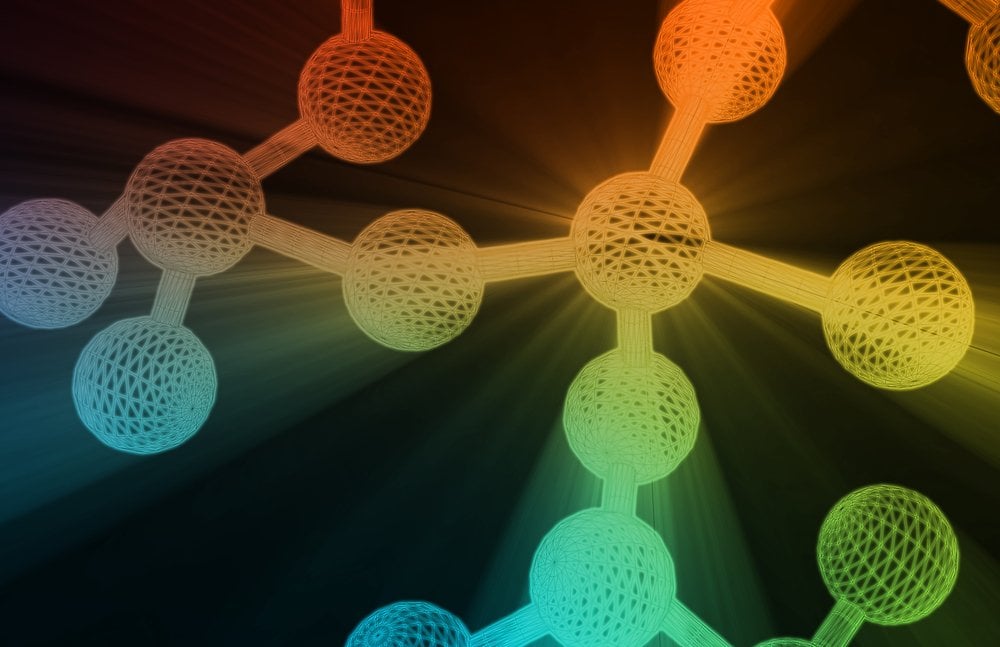
Stem Cells (4), 2004
Inkjet print
13″ x 19″
Suzanne Anker finds beauty and meaning at the borderlines of science. This visual artist and sculptor talks about “the way in which visual art and the biological sciences intersect because of technology.” She is conversant in the languages of all of them.
Anker often takes inspiration from the ways biological information is depicted. The silkscreen in figure B below, for example, enlarges microscopic images of chromosomes into something resembling calligraphy. She often finds and highlights intriguing symmetrical forms in natural images. In figure D she superimposes a butterfly’s wings on a brain scan.
Her tools may also come from technological realms. She’s been making sculpture with 3D printers for twelve years, since long before the technology became trendy. It wasn’t easy to get started, she says: “It took me about a year to figure out how to make something, because you don’t want it to look like a reflection of technology.” Her first successful pieces used software to uncover a third dimension in Rorschach tests. Then she printed them and finally cast some of the mysterious shapes in bronze. Figure C shows two views of one. For the colorful piece in figure E, she processed a two-dimensional photograph with Photoshop to obtain a 3-D “displacement map,” which she then “printed” with plaster, resin, and pigment and set in glass.
Anker is also a longtime teacher and chairman of the fine art department at New York’s School of Visual Arts. Six years ago she added a 3D printing lab. More recently the department opened a “BioArt Lab,” complete with resident PhDs doing real research alongside students making art. “We’ve done tissue engineering, and grown cellulose cloth. We have 15 microscopes,” Anker says proudly. She wants students from both sides of the divide to see relationships between STEM disciplines and art. “If we want to make math and science more appealing to students, narratives involved in the imaginary world can help.”

Codex: Genome (Primer), 2000
Silksreen and pigment on wooden panels
3′ x 4′ (Photo by Henry Sanchez)

Rorschach series (Bear), 2004-05
Cast bronze (front and back views)
4.5″ x 4.5″ x 2″ (Photo by Henry Sanchez)

MRI Butterfly (I), 2008
Inkjet print on watercolor paper
13″ x 19″

Remote Sensing (05), 2013
Plaster, pigment, and resin
4″ x 4″ x 1.75″ (Photo by Raul Valverde)
Making Art with Brainscans and 3D Printers
Suzanne Anker finds beauty and meaning at the borderlines of science. This visual artist and sculptor talks about “the way in which visual art and the biological sciences intersect because of technology.” She is conversant in the languages of all of them. Anker often takes inspiration from the ways biological information is depicted. Her tools may also come from technological realms. She's been making sculpture with 3D printers for twelve years, since long before the technology became trendy.


















